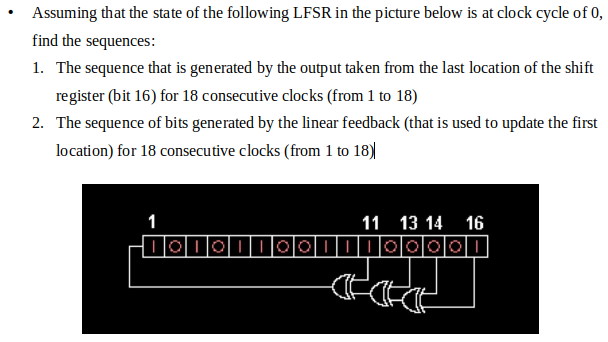

it changes that state bit to the input signal, upon receiving a clock signal.it stores a single bit of state, either a 0 or a 1.We’ll start with the bitwise approach.Ī shift register is a series of bit cells, each of which is a flip-flop: There are at least three ways to describe the linear feedback shift register, or LFSR: a practical bitwise approach, and two theoretical approaches based on the algebra of finite fields, one using polynomials and the other using matrices. Linear Feedback Shift Registers: A Bitwise Approach But part of the reason to understand the theory behind LFSRs is just because the math has an inherent beauty. You can use LFSRs to generate a pseudorandom bit sequence, or as a high-speed counter. Why study the LFSR? They have many practical applications in communications theory.

This article is available in PDF format for easy printing


 0 kommentar(er)
0 kommentar(er)
